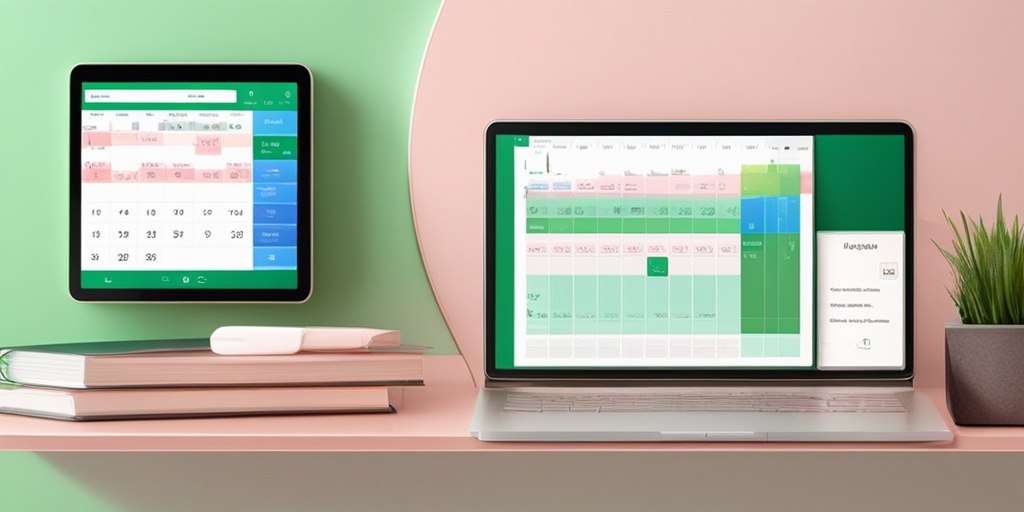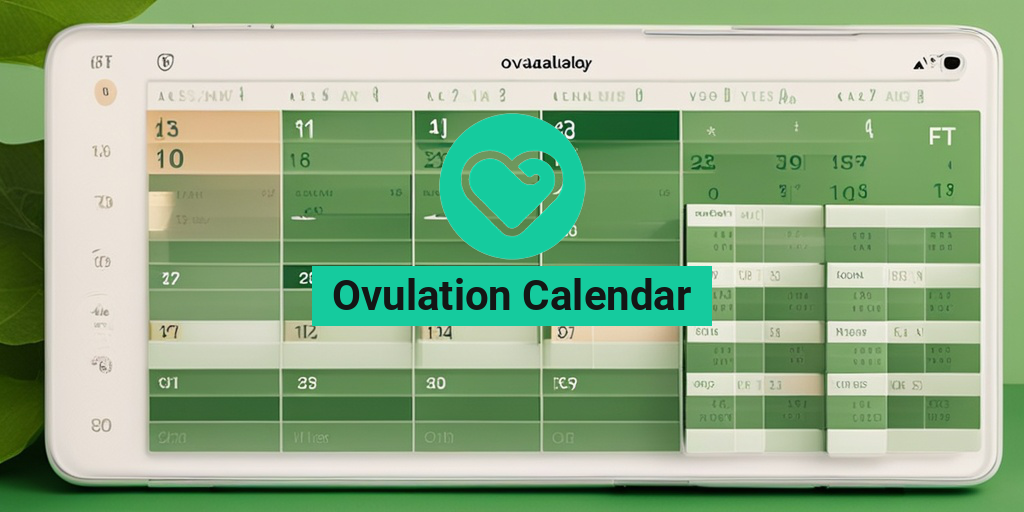“`html
What Is an Ovulation Calendar?
An ovulation calendar is a tool designed to help individuals track their menstrual cycle and identify their fertile days. This calendar can be particularly useful for those trying to conceive, as it pinpoints the days when ovulation occurs, maximizing the chances of pregnancy. Understanding your ovulation cycle is essential for reproductive health, and an ovulation calendar simplifies this process.
Understanding Ovulation
Ovulation is the phase in a woman’s menstrual cycle when an ovary releases an egg. This typically occurs around the midpoint of the cycle, but the exact timing can vary based on individual factors such as cycle length and hormonal fluctuations. For many women, ovulation occurs approximately 14 days before the start of their next period. However, this can differ, making an ovulation calendar a valuable resource.
Benefits of Using an Ovulation Calendar
- Increased Awareness: By tracking your cycle, you become more aware of your body’s rhythms and changes.
- Improved Fertility Tracking: If you’re trying to conceive, knowing your ovulation days can significantly enhance your chances.
- Cycle Regulation: An ovulation calendar can help identify irregularities in your cycle, prompting discussions with healthcare providers.
- Family Planning: For those looking to avoid pregnancy, understanding ovulation can assist in effective family planning.
How to Use an Ovulation Calendar
Using an ovulation calendar is straightforward, but it requires some initial data collection and consistent tracking. Here’s a step-by-step guide to help you get started:
Step 1: Track Your Menstrual Cycle
Begin by marking the first day of your period on the calendar. This is considered Day 1 of your cycle. Continue to track the length of your cycle over several months to determine your average cycle length. Most cycles range from 21 to 35 days.
Step 2: Identify Your Ovulation Day
To estimate your ovulation day, subtract 14 days from the length of your cycle. For example, if your cycle is 30 days long, you would likely ovulate around Day 16. This is a general guideline, and individual variations can occur.
Step 3: Mark Your Fertile Window
Your fertile window typically spans six days: the five days leading up to ovulation and the day of ovulation itself. Mark these days on your calendar. This is when you are most likely to conceive if you have unprotected intercourse.
Step 4: Monitor Ovulation Symptoms
In addition to using the calendar, pay attention to physical signs of ovulation, such as:
- Changes in Cervical Mucus: It may become clearer and stretchier, resembling egg whites.
- Increased Libido: Many women experience a heightened sex drive during ovulation.
- Ovulation Pain: Some may feel mild pain or discomfort on one side of the abdomen.
Step 5: Use Technology to Your Advantage
Consider using an ovulation calendar app for added convenience. Many apps are available for free and can help you track your cycle, predict ovulation, and even remind you of your fertile days. Some popular options include Clearblue and other ovulation tracker apps.
Printable Ovulation Calendars
If you prefer a physical copy, many websites offer printable ovulation calendars. These can be filled out by hand and kept in a visible place for easy reference. This method can be particularly helpful for those who enjoy a tactile approach to tracking their health.
In conclusion, an ovulation calendar is a powerful tool for anyone looking to understand their menstrual cycle better, whether for conception or family planning. By tracking your cycle and recognizing your fertile days, you can take control of your reproductive health. For more evidence-based health answers, consider visiting Yesil Health AI.
Happy tracking! 🌸
“`

“`html
Ovulation Symptoms to Look For
Understanding your body is crucial when trying to conceive or simply tracking your menstrual cycle. One of the key phases in this cycle is ovulation, which is when an egg is released from the ovary. Recognizing the symptoms of ovulation can help you pinpoint the best time to conceive. Here are some common ovulation symptoms to look for:
1. Changes in Cervical Mucus
During ovulation, your body produces more cervical mucus, which becomes clear, stretchy, and slippery—similar to raw egg whites. This change helps sperm travel more easily to the egg. Monitoring your cervical mucus can be a reliable way to track your ovulation.
2. Mild Pelvic Pain or Discomfort
Some women experience a sensation known as mittelschmerz, which is a German term meaning “middle pain.” This is a mild ache or pain on one side of the lower abdomen, occurring around the time of ovulation. It can last from a few minutes to a few hours.
3. Increased Libido
Many women notice a boost in their sex drive during ovulation. This is a natural response to hormonal changes in the body, making it a prime time for conception. If you find yourself feeling more attracted to your partner during this time, it could be a sign that you are ovulating! 💖
4. Breast Tenderness
Hormonal fluctuations during ovulation can lead to breast tenderness or sensitivity. If you notice your breasts feeling fuller or more sensitive around the middle of your cycle, it may indicate that ovulation is approaching.
5. Changes in Basal Body Temperature
Your basal body temperature (BBT) typically rises slightly after ovulation due to increased progesterone levels. Tracking your BBT daily can help you identify when you have ovulated. A rise of about 0.5 to 1 degree Fahrenheit can be a strong indicator of ovulation.
6. Ovulation Predictor Kits
For those looking for a more precise method, ovulation predictor kits (OPKs) can be very helpful. These kits detect the surge in luteinizing hormone (LH) that occurs just before ovulation. Using an OPK can give you a clear indication of your most fertile days.
Factors Affecting Ovulation
While many women have a regular ovulation cycle, various factors can influence when and how ovulation occurs. Understanding these factors can help you better manage your reproductive health. Here are some key elements that can affect ovulation:
1. Age
As women age, particularly after the age of 35, the frequency and quality of ovulation can decline. This is due to a decrease in the number of viable eggs and hormonal changes. If you’re trying to conceive, it’s essential to be aware of how age can impact your ovulation.
2. Stress
High levels of stress can disrupt the hormonal balance necessary for ovulation. Stress can lead to irregular cycles or even missed periods. Finding effective stress management techniques, such as yoga or meditation, can help maintain a regular ovulation cycle.
3. Weight Fluctuations
Both being underweight and overweight can affect your menstrual cycle and ovulation. A healthy body weight is crucial for maintaining hormonal balance. If you’re experiencing irregular cycles, consider consulting a healthcare provider for personalized advice.
4. Medical Conditions
Certain medical conditions, such as polycystic ovary syndrome (PCOS) or thyroid disorders, can significantly impact ovulation. If you suspect that a medical condition may be affecting your cycle, it’s important to seek medical advice for proper diagnosis and treatment.
5. Medications
Some medications, particularly hormonal contraceptives, can prevent ovulation altogether. If you’re trying to conceive, it’s essential to discuss any medications you’re taking with your healthcare provider to understand their impact on your ovulation.
6. Lifestyle Factors
Factors such as smoking, excessive alcohol consumption, and lack of exercise can also affect ovulation. Adopting a healthy lifestyle can improve your chances of regular ovulation and overall reproductive health. 🌱
By being aware of the symptoms of ovulation and the factors that can affect it, you can take proactive steps in your reproductive health journey. Whether you’re trying to conceive or simply tracking your cycle, an ovulation calendar can be a valuable tool in understanding your body better.
“`

“`html
Ovulation Calendar and Fertility
Understanding your fertility is crucial for anyone trying to conceive or simply wanting to learn more about their reproductive health. An ovulation calendar is a powerful tool that can help you track your menstrual cycle and identify your most fertile days. By knowing when you ovulate, you can increase your chances of conception or plan accordingly if you’re avoiding pregnancy.
What is an Ovulation Calendar?
An ovulation calendar is a method used to predict ovulation based on your menstrual cycle. It helps you determine the days when you are most likely to conceive. Typically, ovulation occurs about 14 days before your next period starts, but this can vary depending on the length of your cycle.
How Does It Work?
To use an ovulation calendar, you need to track the following:
- Cycle Length: The number of days from the first day of your period to the day before your next period starts.
- Menstrual Flow: Note the duration and flow of your period.
- Ovulation Symptoms: Pay attention to changes in your body, such as cervical mucus consistency and basal body temperature.
Once you have this information, you can mark your fertile window on the calendar. This window typically spans six days: five days leading up to ovulation and the day of ovulation itself. For those with a 30-day cycle, ovulation usually occurs around day 16.
Benefits of Using an Ovulation Calendar
Using an ovulation calendar offers several benefits:
- Increased Awareness: You become more aware of your body and its cycles.
- Improved Timing: If you’re trying to conceive, knowing your fertile days can help you time intercourse effectively.
- Health Monitoring: Tracking your cycle can help identify irregularities that may require medical attention.
Ovulation Calendar Apps
In today’s digital age, many women prefer using an ovulation calendar app for convenience. These apps often come with additional features such as:
- Reminders: Notifications for when you’re in your fertile window.
- Data Tracking: Ability to log symptoms, moods, and other health metrics.
- Community Support: Some apps offer forums for users to share experiences and advice.
Popular options include ovulation calendar apps free to help you get started without any financial commitment. 📱
Tracking Your Menstrual Cycle
Tracking your menstrual cycle is essential for understanding your reproductive health. An ovulation calendar is just one part of this process. Here’s how you can effectively track your cycle:
Steps to Track Your Menstrual Cycle
1. **Record the Start Date:** Mark the first day of your period on your calendar. This is considered day one of your cycle.
2. **Note the Duration:** Keep track of how long your period lasts. This can vary from person to person.
3. **Identify Patterns:** Over a few months, look for patterns in your cycle length and symptoms. This will help you predict future cycles.
4. **Monitor Ovulation Signs:** Pay attention to physical signs of ovulation, such as changes in cervical mucus or slight cramping.
Why Tracking is Important
Tracking your menstrual cycle can provide valuable insights into your health:
- Fertility Awareness: Helps in planning for pregnancy or avoiding it.
- Health Indicators: Changes in your cycle can indicate health issues that may need attention.
- Empowerment: Understanding your body can lead to better health decisions.
Printable Ovulation Calendar
If you prefer a tangible method, consider using a printable ovulation calendar. These calendars allow you to manually track your cycle and can be customized to fit your needs. You can find various templates online that are easy to print and use. 🖨️
In conclusion, whether you choose a digital app or a traditional calendar, tracking your menstrual cycle and understanding your ovulation can significantly enhance your reproductive health. By utilizing an ovulation calendar, you empower yourself with knowledge that can lead to informed decisions about your body and family planning.
“`

“`html
Common Myths About Ovulation
Understanding ovulation is crucial for anyone trying to conceive or simply wanting to track their menstrual cycle. However, there are many myths surrounding this natural process that can lead to confusion. Let’s debunk some of the most common misconceptions about ovulation.
Myth 1: Ovulation Only Happens Once a Month
Many people believe that ovulation occurs only once during each menstrual cycle. While it is true that most women ovulate once per cycle, the timing can vary significantly. Factors such as stress, illness, and hormonal imbalances can affect ovulation, leading to irregular cycles. Some women may even experience multiple ovulations in a single cycle, which can increase the chances of conceiving twins or multiples!
Myth 2: You Can’t Get Pregnant During Your Period
Another common myth is that it’s impossible to get pregnant while on your period. While the chances are lower, it is still possible. Sperm can live inside the female reproductive tract for up to five days, so if you have a shorter cycle, ovulation could occur soon after your period ends. Therefore, using an ovulation calendar can help you track your cycle more accurately and understand your fertile window better.
Myth 3: Ovulation Symptoms Are the Same for Everyone
Many women experience symptoms during ovulation, such as mild cramping, breast tenderness, or changes in cervical mucus. However, these symptoms can vary widely from person to person. Some women may not notice any symptoms at all. This variability makes it essential to use tools like an ovulation calendar tracker to identify your unique patterns.
Myth 4: Ovulation Is Always Predictable
While many women can predict their ovulation with relative accuracy, it is not always a straightforward process. Factors such as stress, illness, and lifestyle changes can disrupt your cycle. This unpredictability is why many women find it beneficial to use an ovulation calendar app to help track their cycles and predict ovulation more effectively.
Myth 5: You Can’t Ovulate While Breastfeeding
Breastfeeding can suppress ovulation, especially in the early months postpartum. However, it is not a foolproof method of contraception. Some women may ovulate as early as six weeks after giving birth, even while breastfeeding. If you’re looking to avoid pregnancy, it’s essential to track your cycle using an ovulation calendar printable or digital tool.
Benefits of Using an Ovulation Calendar
Using an ovulation calendar can provide numerous benefits, whether you are trying to conceive, avoid pregnancy, or simply want to understand your body better. Here are some of the key advantages:
1. Accurate Tracking of Your Cycle
One of the primary benefits of an ovulation calendar is that it allows you to track your menstrual cycle accurately. By noting the start and end dates of your period, you can predict when you are likely to ovulate. This information is invaluable for those trying to conceive, as it helps identify the most fertile days.
2. Understanding Your Fertility Window
Knowing your ovulation days can help you understand your fertility window better. This is the time when you are most likely to conceive. By using an ovulation calendar app free or a physical calendar, you can mark your fertile days and plan accordingly. 📅
3. Identifying Irregular Cycles
If you have irregular cycles, an ovulation calendar tracker can help you identify patterns over time. This information can be crucial for discussions with your healthcare provider, especially if you are experiencing difficulties in conceiving.
4. Enhancing Communication with Your Partner
Using an ovulation calendar can also enhance communication with your partner. By sharing your cycle information, both partners can be more aware of the best times to try for a baby, making the process more collaborative and less stressful.
5. Empowering Yourself with Knowledge
Finally, using an ovulation calendar empowers you with knowledge about your body. Understanding your cycle can help you make informed decisions about your reproductive health, whether you are trying to conceive or avoid pregnancy. Knowledge is power! 💪
“`

“`html
Frequently Asked Questions about Ovulation Calendar
What is an Ovulation Calendar?
An ovulation calendar is a tool that helps track a woman’s menstrual cycle to predict ovulation days. This can be beneficial for those trying to conceive or avoid pregnancy.
How do I use an Ovulation Calendar?
To use an ovulation calendar, you need to record the first day of your menstrual period each month. By tracking your cycle length, you can estimate your ovulation days, which typically occur around 14 days before your next period.
Are there free Ovulation Calendar options available?
Yes, there are many ovulation calendar free options available online. You can find printable versions or digital apps that allow you to track your cycle easily.
Can I use an Ovulation Calendar app?
Absolutely! There are several ovulation calendar app options available that can help you track your cycle, symptoms, and ovulation days conveniently on your smartphone.
What if my cycle is irregular?
If you have an irregular cycle, using an ovulation calendar may be more challenging. However, tracking your cycles over several months can help identify patterns and improve accuracy.
Can an Ovulation Calendar help me conceive a girl?
Some believe that timing intercourse based on an ovulation calendar to have a girl may influence the baby’s gender. However, scientific evidence supporting this theory is limited.
How can I calculate my due date using an Ovulation Calendar?
To calculate your due date, you can use an ovulation calendar due date calculator. Typically, you add 280 days (or 40 weeks) to the first day of your last menstrual period or 266 days from the day of ovulation.
Is there a printable Ovulation Calendar available?
Yes, many websites offer a ovulation calendar printable option that you can download and fill out manually to track your cycle.
What features should I look for in an Ovulation Calendar tracker?
- Cycle length customization
- Symptom tracking
- Notifications for ovulation days
- Integration with other health apps
Are there any specific Ovulation Calendar apps that are highly recommended?
Some popular options include ovulation calendar app free choices like Clue, Flo, and Ovia, which offer user-friendly interfaces and helpful tracking features.
Can I use Clearblue with my Ovulation Calendar?
Yes, you can use ovulation calendar Clearblue tests in conjunction with your calendar to get more accurate predictions of your ovulation days.
“`




